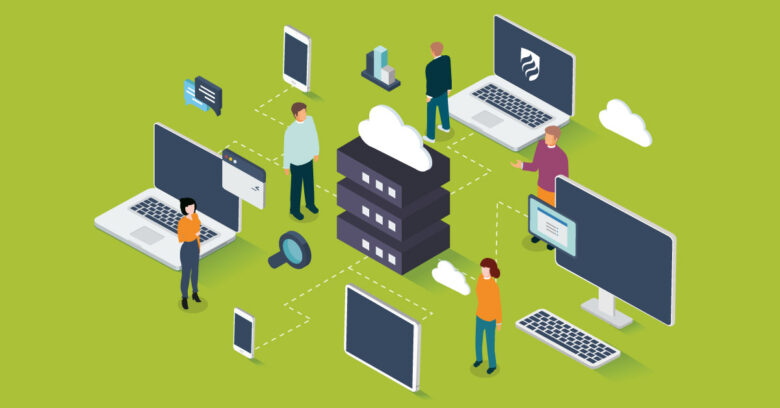IT systems are an essential part of any business, and it’s important that they meet the needs of the people using them. Unfortunately, many IT systems are designed without regard for the end users. As a result, they can be difficult to use, inefficient, and even dangerous. We will discuss how to design an IT system that meets your needs. We’ll cover topics such as user experience, requirements, and more. By following these tips, you can ensure that your IT system is easy to use and meets your specific needs.
Contents
The Five Major Categories of IT Needs

Source: elmhurst.edu
1. Data storage and retrieval:
Creating a system that can store data effectively and efficiently, as well as retrieve it quickly and accurately is essential for any business.
There are many different ways to accomplish this, and the design of your system will depend on the specific needs of your business.
Some common solutions include different types of storage media, RAID systems, cloud storage, and enterprise resource planning (ERP) software. You can find a good IT services provider to help you with the task.
2. Networking:
A reliable network is essential for all businesses, whether they are online or offline.
The type of network you select will depend on the size and location of your business, as well as the type of technology you want to use.
There are a variety of solutions available, including wired networks, wireless networks, VPNs, and satellite networking.

Source: forbes.com
3. Security:
Security is one of the most important aspects of any IT system, especially in today’s world where cybercrime is rampant.
Security measures include antivirus software, firewalls, encryption methods, and user authentication procedures.
It is important to choose a security solution that meets your specific needs while still being effective against attacks.
4. Computing resources:
Computing resources are essential for all businesses large or small; they allow you to run your business the way you want it to be run.
There are a variety of options available, from desktop computers to cloud-based services.
It is important to choose the right type of computing resources for your business and to keep track of the ongoing costs.
5. Business software:
Business software is essential for any business, whether they are online or offline.
There are many different types of software available, and it is important to find a solution that meets your specific needs.
Some common solutions include ERP systems, website builders, and accounting software.

Source: on-demandcoo.com
Understanding Your Organization’s Needs
Many times, organizations will have a general idea of what they need in terms of an information system, but may not be able to provide a specific list of what they need. In these cases, it is important to take into account the organization’s needs and how the IT system can help meet those needs.
One way to do this is to think about how the organization functions and what its key business processes are. Once you have a good understanding of these, you can start to see how the IT system can help modernize or improve those processes.
Additionally, it is important to consider what resources the organization currently has available and whether those resources are adequate for meeting its needs. If there are limitations on staff or computing resources, then an IT system that relies on those resources may not be feasible.
Finally, it is important to look at how the IT system could be used by staff members and customers. Certain features or functionality may be more beneficial for one group over another. For example, if your company sells products online, you might want to include features that make it easy for customers to order products and receive them quickly. Conversely, if your company provides customer service directly to end users, features that make it easier for customers to contact customer service would be beneficial.
Establishing Priorities
When it comes to designing an IT system, one of the most important decisions to make is what needs to be included. After all, there’s no point in building one that can’t do its job—or worse, one that isn’t functional at all. Here are tips for establishing your priorities:

Source: blog.weekdone.com
1. Understand Your Business Goals
One of the first steps in system design is understanding your business goals. What are you trying to achieve? What problems do you think it could help solve? Once you have a good understanding of your goals, you can start to figure out which features and functions are essential for accomplishing those objectives.
2. Look at the Current System
Before starting any design work, it’s important to take a look at the current state of your IT system. This way, you’ll get an idea of what needs improvement and how best to address them. It may also be helpful to examine past failures or successes in order to better understand how it should function.
3. Assess Your Personnel Needs
System design isn’t a one-man job—it takes a team effort! Before starting anything major, it’s important to assess your personnel needs and figure out who will be responsible for which tasks. This way, everyone involved with the project will know their role and be able to complete their assigned tasks efficiently and effectively.

Source: traqq.com
4. Identify the Necessary Resources
In order to build a system that meets your business goals, you’ll need the necessary resources. This includes not only technical staff members, but also financial resources, storage space, and bandwidth. Make sure you have all of the resources you need before starting any design work.
5. Plan for Future Growth and Expansion
Make sure you plan for future growth by developing a roadmap that outlines which features and functions will be added over time. This way, you can keep your system up to date without having to spend excessive amounts of money on upgrades and expansions.
6. Work with an Expert
If you’re unfamiliar with system design or don’t have the required resources to complete the project yourself, enlist the help of an expert. A qualified consultant can provide you with guidance and assistance throughout the entire process, from initial planning to final implementation.

Source: helpdesk.orangescrum.com
7. Be Flexible and Adaptable
System design is a complex process that will likely change over time as your business evolves. Be flexible and adaptable in order to accommodate these changes—and don’t be afraid to make some tweaks along the way. This will help you maintain a consistent user experience and ensure that your system meets your needs from day one.
Conclusion
With so many different types of IT systems out there, it can be tough to know where to start when designing your own. We’ve provided you with some tips on how to design one that meets your specific needs and make sure that it is scalable and future-proofed. Armed with this knowledge, you’ll be able to create a system that works well for your business and meets the specific needs of your team.
